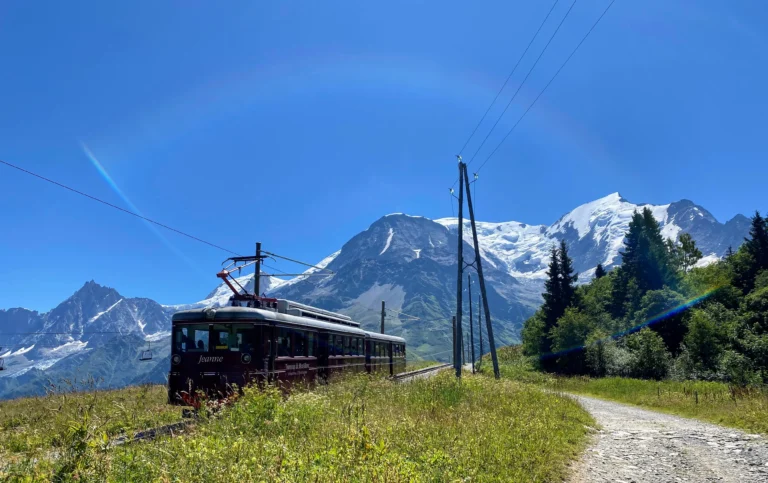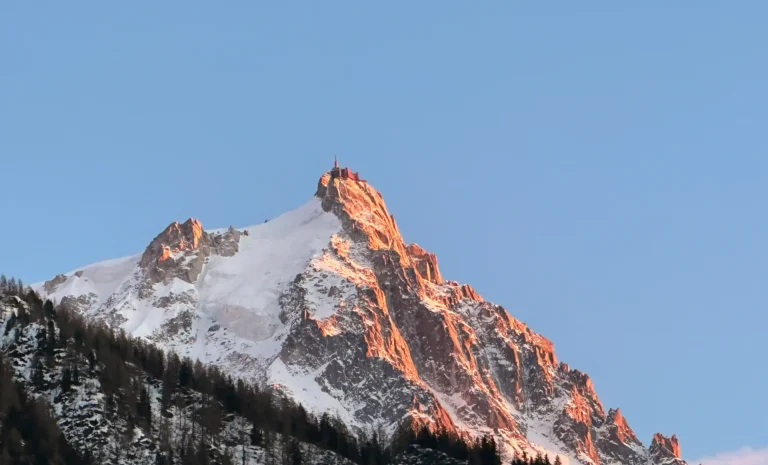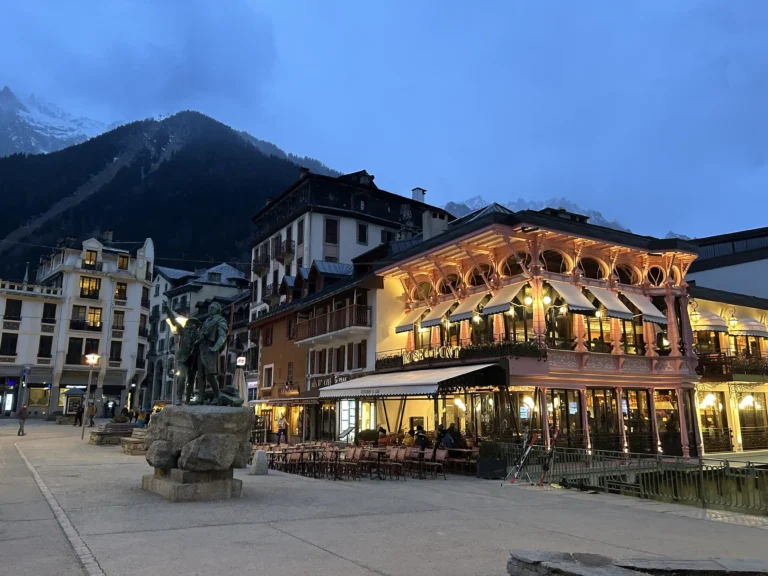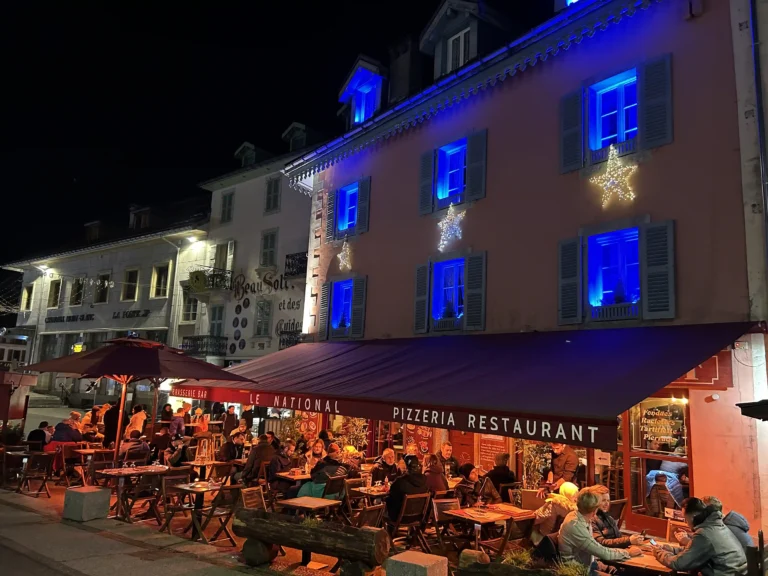You won’t need a car after you get to Chamonix. Chamonix has excellent public transit, and everything is easily accessible. You can use them without charge if you have a tourist guest card.
If you’re planning on staying within the valley and walking, you can manage quite well without a car.
If you’re planning on going between the different areas on the same day or heading out, for example, to Courmayeur for a day, then a car would be handy. Still, if it’s just within the main areas and keeping to one per day, then you should be OK with the free bus up and down the valley.
Local buses in Chamonix
The bus service is very regular, and you can often find seats just by jumping on and off at the right places. I think you miss a bit of the experience if you don’t ride around on the local transport network, and try your luck at French with the bus driver.
Winter skiers and snowboarders can board the ski bus with their equipment. In the winter, you’ll be dropped off just outside the ski lifts; in the summer, the special bike bus will take you and your bike to the mountain riding. Your hotel information indicates where your nearest bus stop and bus timetable are. The buses are free with your lift pass or a tourist guest card. However, Chamonix’s buses are a battle zone in peak season at peak times, but so can the car parks. Buses are not uncommon to drive by busy bus stops because there isn’t any room left on the bus.
Local trains in Chamonix
Using your tourist guest card, you can also travel free on the Mont Blanc Express between Servoz and Vallorcine. The local TER train runs from neighboring St. Gervais to Vallorcine, where you can change for Martigny (Switzerland). The tourist visitor cards do not include the Montenvers train. Still, it will be included when you buy your summer Mont Blanc Multipass or winter Mont Blanc Unlimited lift passes. It may take a bit longer to walk to the train station than it would if you took the bus, but it’s far more pleasant and often much less crowded.
Taxi in Chamonix
Taxis are disgracefully expensive in Chamonix. There is no Uber or Lyft as of yet. You can expect to pay 25-30 euros for a 2km trip into town. Most cabs have some ski-carrying equipment, and you may typically enter the car wearing your ski boots.
Summer season
The hikes will quite often start at one lift and finish at another. You will be using public transport from time to time anyway.
Bikes and e-bikes can be a pleasant way to get around, and the flat valley floor is ideal for cycling. Bike rental is highly recommended.
However, a car can be handy to get to some beautiful but more challenging to access places like Lac Passy and Lac Vert. Also, if the weather is terrible, you can drive through the tunnel to Italy for the day, which often has a different climate.
It relies on a few factors as to whether or not hiring a car for Chamonix is a smart move. If you’re coming from a big city to Chamonix, staying there for a few days, then returning to the city, public transportation will be the most cost-efficient and practical alternative.
However, suppose you plan on taking road trips to several smaller towns around France, Chamonix being only one of them. In that case, it is highly suggested that you rent a car.
Winter season
The buses and trains are reliable and efficient, but the valley and ski areas are spread out. The car gives you flexibility and convenience.
With a car, you can drive to all the ski areas in Chamonix (Les Houches, Brevent, Flegere, Argentiere (GM), and Le Tour). If you’re staying for a week, you can also drive to St. Gervais, Megeve, or Les Contamines, both close by and offer a change of scenery. The transfers will be more convenient if you have a car. When you scramble to hit the powder and be in line for a bus with 50 other individuals, the additional fee for car hire may not seem like a lot of money.
If any of the following apply to you, having a car is preferable:
- You have children.
- You want to eat or drink in Chamonix center regularly.
- You want maximum flexibility for your plans.
- It is the peak season. During peak season, buses start to slow down due to the loading and unloading, and you can rarely find a seat.
If any of these hold true for you, you could manage without a car:
- It is the off-season.
- You enjoy hiking, walking, or cycling, even in bad weather.
- Even though some waiting is involved, you are delighted to take public transportation.
- You are planning to do hikes and activities within the valley mainly.
- You are all fit and strong.
Related Reading:




